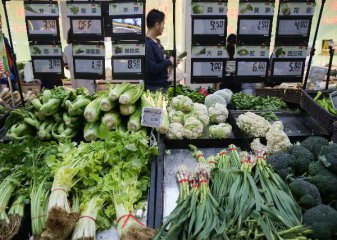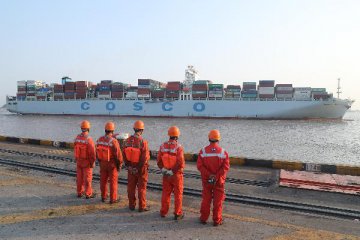
China’s consumer price index (CPI) rose by 1.4 percent year on year in July, with the growth down by 0.1 percentage points when compared with that in June, and producer price index (PPI) maintained a year-on-year increase of 5.5 percent for three consecutive months, the National Bureau of Statistics (NBS) said Wednesday. It is widely believed that the CPI trend will be mild and there’s no pressure for inflation. PPI growth is likely to slow down but won’t drop remarkably.
No great pressure for inflation in 2017
“CPI decrease was mainly caused by the weakening carryover effect.” Lian Ping, chief economist with Bank of Communications, indicated that new factor boosting price hike is quite weak since the beginning of this year, making it difficult to offset the shrinking carryover effect. CPI growth will slow slightly but maintain stable on the whole.
According to the NBS, the carryover effect and new price-rising factor contributed about 1 percentage point and 0.4 percentage points respectively to the 1.4 percent year-on-year growth in July.
Lian analyzed that carryover effect will be still a major factor influencing CPI in the next half of the year. If it goes down, the year-on-year growth of CPI may slow down. As non-food prices keep hiking a little, CPI may rebound in a short term if food prices surge sharply, but pressure for inflation won’t be great in the whole year.
Noticeably, growth of core CPI excluding prices of food and energy suffers a decline for the first time over last six months to 2.1 percent in July, which may imply weak demand.
Zhu Jianfang, chief economist with CITIC Securities, said that the restrictions of food and pig cycle on inflation still exist in the short term and PPI decline will also cause non-food CPI to drop. These factors will lead to slower rise in CPI in a short term. But he pointed out that the market should be alert that CPI growth will pick up in the latter period of the fourth quarter.
PPI growth may decline in the future
NBS’ statistics show that the PPI has maintained at 5.5 percent for three straight months since May. It is generally believed that the PPI growth may not continue in the second half.
Lian indicated that with declining investment, the demand for industrial products may weaken. As a result, the prices of industrial products may not surge significantly. Besides, with the declining of tail-raising factors in the second half, the PPI growth may drop in the future. It is expected that the PPI growth may be lower than 5 percent in the second half, but the average growth for the whole year may be higher than 5 percent.
Zhu indicated that the PPI growth will continue declining in the second half due to the basis. Zhu estimated that the PPI growth will be 0 to 2 percent in the end of the year.
The relatively stable inflation and economic fundamentals in the year will benefit the central bank in making more efforts on promoting financial de-leveraging and preventing systematical financial risks, indicated Zhang Jun, chief economist at the Morgan Stanley Huaxin Securities.
Translated by Star Zhang























Latest comments